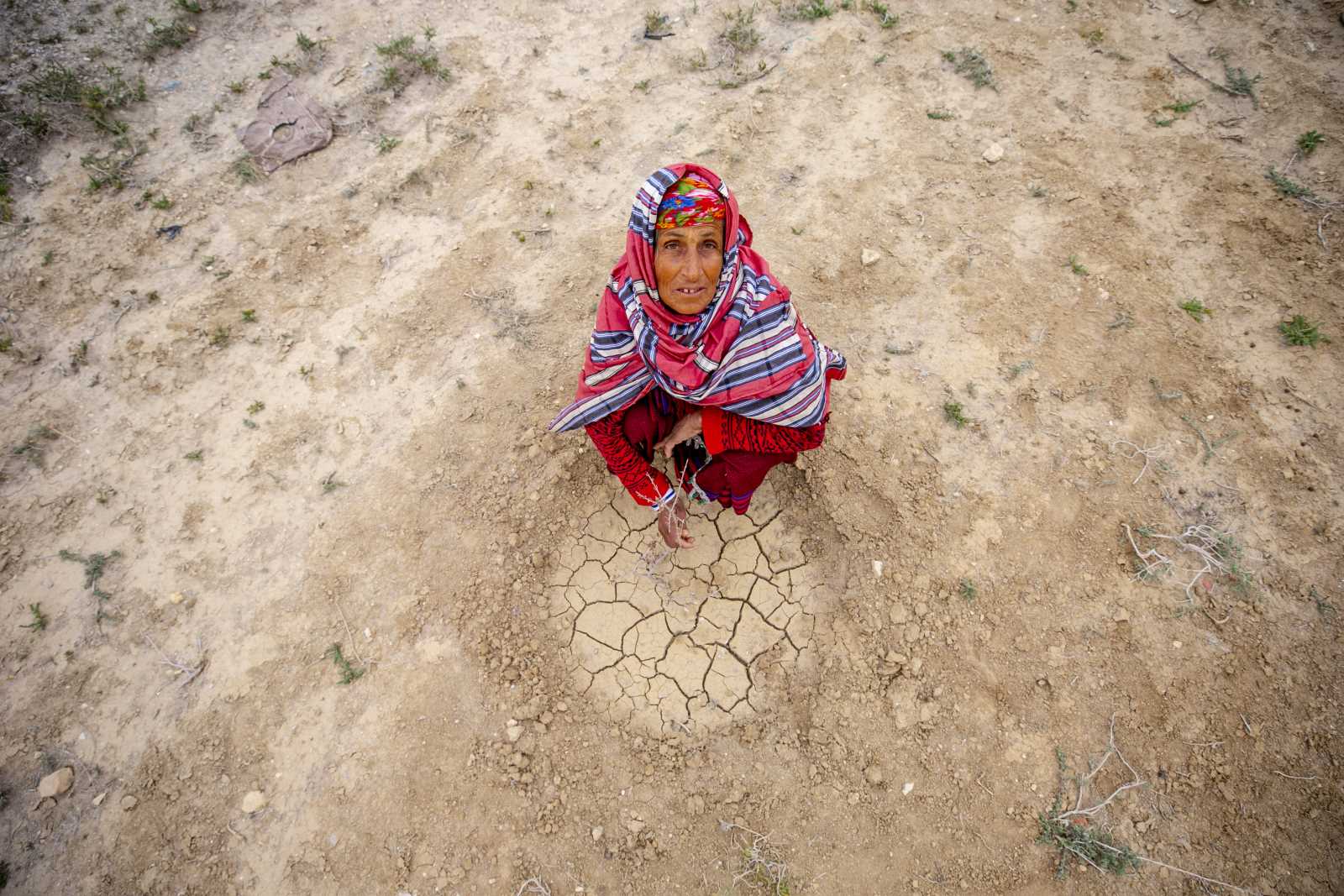Agriculture
Pesticides are useful, but must be applied responsibly
Massive swarms of desert locusts invaded eastern Africa in the summer of 2019, destroying hundreds of thousands of hectares of crops and worsening food shortages in at least eight countries. In some cases, the swarms were the size of cities, big enough to darken the sky. Making matters worse, heavy rainfall in 2020 meant the pests stayed in the region, breeding more locusts and deepening the food crisis. The climate crisis is compounding problems (see Mahwish Gul in Focus section of D+C/E+Z e-Paper 2020/11).
Another pest – the armyworm – has been hitting Africa hard since 2016 (see Nowadays column by Humphrey Nkonde in D+C/E+Z e-paper 2017/04). These caterpillars appear in “armies” that consume everything in their path, devastating cereal crops and pastures. According to the UN, this insect invasion has caused $ 3 billion in crop damage across the continent so far. Some farmers lost their entire harvest. Asia is increasingly affected as well.
When pests invade a region, farmers typically try to prevent them from landing on the fields. Some farmers light fires or create clouds of smoke by burning refuse. Some even throw stones or wave sticks at the invading swarms or make noise with various objects to scare them off.
None of these methods helps much. Spraying pesticides from aircraft, on the other hand, produces results. In the case of the locust invasion in the Horn of Africa, spraying involved a coordinated international effort. The UN Food and Agriculture Organization (FAO) and the Desert Locust Control Organization for Eastern Africa (DLCO-EA), a regional organisation, have been actively involved. According to an article in the monthly magazine Africa Report, the DLCO-EA trained hundreds of agents to transmit the coordinates of locust swarms. When a swarm exceeded 500 hectares in size, the authorities deployed light aircraft at low altitudes to kill the pests with chemicals.
Handle with care
Spraying operations of this type are controversial. The chemicals that kill pests can also kill beneficial insects such as bees and beetles, which are needed for a functioning ecosystem. Moreover, if chemicals are over-used – leaving residues that exceed recommended amounts – the result could be a contaminated harvest that sickens or even kills humans and animals. When excess amounts of pesticide accumulate in the body, the effects – depending on the dosage and the chemicals involved – can include birth defects, tumours, genetic changes, blood and nerve disorders, endocrine disruption, coma or death, according to scientific studies.
In the Horn of Africa operations, however, officials used about one litre of active pesticide ingredients per hectare of cropland – a level they say kills the pests without harming people and animals.
That may be, but Africa as a whole still has a long way to go before it handles pesticides safely. Widespread mishandling of pesticides in Africa was documented by Feed the Future, a US government programme. Its report (2019) stated: “Without regulation and adequate training/capacity building of farmers, Africa is at risk of widespread pesticide poisoning.” The authors warned that “increased reliance on pesticides has led to the contamination of African freshwater sources and has threatened wildlife, including many endangered species.”
These dangers are present even though Africa, in comparison to other regions of the world, so far uses pesticides sparingly. The FAO’s most recent statistics comparing the use of pesticides in different regions show that Africa uses the smallest quantities per hectare (see graph).
Normal
0
21
false
false
false
EN-US
X-NONE
X-NONE
/* Style Definitions */ table.MsoNormalTable {mso-style-name:"Normale Tabelle"; mso-tstyle-rowband-size:0; mso-tstyle-colband-size:0; mso-style-noshow:yes; mso-style-priority:99; mso-style-parent:""; mso-padding-alt:0cm 5.4pt 0cm 5.4pt; mso-para-margin-top:0cm; mso-para-margin-right:0cm; mso-para-margin-bottom:8.0pt; mso-para-margin-left:0cm; line-height:107%; mso-pagination:widow-orphan; font-size:11.0pt; font-family:"Calibri",sans-serif; mso-ascii-font-family:Calibri; mso-ascii-theme-font:minor-latin; mso-hansi-font-family:Calibri; mso-hansi-theme-font:minor-latin; mso-ansi-language:EN-US; mso-fareast-language:EN-US;}
Fast growing market
According to the FAO, in 2018 Africa used an average of 0.3 kilogrammes (kg) of active pesticides per hectare of crop land, compared to 3.5 kg in the Americas (where average use in South and Central America was higher than in North America), and 3.7 kg in Asia. The worldwide average was 2.7 kg per hectare.
But Africa’s relatively light use of pesticides is starting to change, as suppliers of chemicals for agriculture – insecticides, fungicides and herbicides, but also fertilisers – “discover” the continent. Market Data Forecast, a consulting firm, estimates the market for crop protection in the Middle East and Africa at $ 8.7 billion in 2020. It projects that figure to rise to $ 10.4 billion by 2025, implying a compound annual growth rate of 3.1 % in the five-year period.
Indeed, Africa is a strong candidate for increased use of pesticides. Aside from its dependence on agriculture to feed its population and generate export revenues, Africa needs pesticides because of the nature of its agriculture. As in other developing regions, African agriculture relies heavily on growing plants in open fields rather than in greenhouses, making its crops more vulnerable to pests.
Moreover, the increasingly important horticultural sector in Africa is focused on plants with relatively short life spans from harvest to spoilage, which consumers prefer in their fresh state. An attack by pests at the wrong time can wipe out an entire harvest. In addition, the plants face a range of threats beyond invading insects, including viruses and even some types of birds.
Natural pest control
That said, synthetic pesticides are not the only way to protect Africa’s crops. Some “good” bugs in nature are natural enemies of predator insects; deploying them in a well-considered and sustainable way can achieve some of the same results obtained by spraying chemicals.
Where pesticides are the only quick and effective solution – for example during a pest invasion – spraying should still occur. That should be part of broader and predefined Integrated Production and Protection (IPP) plans. They must be designed before a crisis occurs. Spraying should also be done with strict adherence to safety protocols concerning amounts and delivery methods.
IPP plans serve to keep costs and environmental impacts low, while maximising crop yields and quality. An IPP begins with using high-quality seeds and other planting materials such as bulbs and potato tubers. An IPP also includes ensuring the use of safe and effective fertilisers and good cultivation and breeding of crops. Where possible, an IPP should consider where greenhouses can be used to control the plants’ environments.
Synthetic pesticides, herbicides and fertilisers can be valuable tools in the context of an IPP, helping to ensure that high-quality crops are produced cost-effectively and delivered reliably to global markets. However, these chemicals are not a panacea. Regulators in both producing and consuming countries must guard against excessive or improper use of these chemicals.
Inspect the supply chain
In producing countries, regulators must inspect plants – from the farm level along the supply chain all the way to the point of export. They must decertify produce that exceeds the allowed level of pesticide traces, thereby preventing contaminated crops from being used. Importing countries’ regulators must also ensure that safety standards are met at all stages along the supply chain to the point of sale to consumers.
In producing countries, total quality control means ensuring that everyone who has a role in the supply chain is aware of that role. Better training of farmers – and of the agriculture-extension advisers that inform farmers about best practices – serves this purpose. At the same time, governments and other organisations should focus on developing technological alternatives to pesticides, including deploying biological pesticides.
Yet when locusts or armyworms swarm into an area, officials and farmers need a fast way to manage the crisis. That solution is likely to involve spraying synthetic pesticides. With the proper policy focus and training, that spraying can be done safely and responsibly.
Reference
Feed the Future, 2019: Synthetic pesticides in Africa: The good, the bad and the ugly.
https://www.agrilinks.org/post/synthetic-pesticides-africa-good-bad-and-ugly
Patrick Ajwang is a senior lecturer in agricultural and biosystems engineering at Jomo Kenyatta University of Agriculture and Technology (JKUAT) in Juja, Kenya.
ajwang@agr.jkuat.ac.ke













